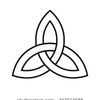Bloggfærslur mánaðarins, september 2011
30.9.2011 | 14:33
Ef að múslimar réðu þínu landi
 Mjög forvitnilegt myndband sem veltir þessari spurningu fyrir sér.
Mjög forvitnilegt myndband sem veltir þessari spurningu fyrir sér.
http://web.gbtv.com/media/video.jsp?content_id=19791275&topic_id=24584158&tcid=vpp_copy_19791275&v=3
30.9.2011 | 11:32
Úpps, sorry
Þetta finnst mér alveg mögnuð saga, ýtti a vitlausan takka og það gerði það að verkum að flugvélin hrapaði 1900 metra... Ekki beint saga fyrir flughrædda. Eitthvað segir mér að það má bæta þessa hönnun... Minnir mig a senu í einni mynd, set inn klippuna hérna fyrir neðan.

|
Setti flugvélina á hliðina |
| Tilkynna um óviðeigandi tengingu við frétt | |
Spaugilegt | Breytt s.d. kl. 11:37 | Slóð | Facebook | Athugasemdir (2)
28.9.2011 | 21:29
Norðurljósin út í geimnum
Það er alveg ótrúlegt hve mikið af fegurð við höfum aðgang að bara hérna á jörðinni. Ímyndið ykkur að hafa þúsundir ára að kanna óravíddir geimsins og aðra staða eins og jörðina. Ég trúi að það er eitt af því sem bíður okkar þegar Guð skapar nýjann himinn og nýja jörð.
Trúmál | Breytt 29.9.2011 kl. 12:32 | Slóð | Facebook | Athugasemdir (0)
28.9.2011 | 10:04
Um Ísrael og Palestínu
Hérna er ein hlið málsins, sú sem ég tel vera ágætlega nálægt sannleikanum þó að auðvitað er þetta ekki allur sannleikurinn.
27.9.2011 | 09:57
180 Movie
Mjög áhrifamikil mynd frá Ray Comfort þar sem hann fjallar um nasismann og Hitler.
25.9.2011 | 01:44
Kettir, stórkostleg dýr, blessun ekki bölvun
 Kettir eru með skemmtilegustu dýrunum sem Guð skapaði, nóg er að kíkja á youtube og slá inn "cats" og sjá mjög langan lista af myndböndum af köttum að gera eitthvað sniðugt. Til dæmis þetta sem fylgir þessari grein hefur fengið 59 miljón heimsóknir sem hlýtur að teljast mjög gott.
Kettir eru með skemmtilegustu dýrunum sem Guð skapaði, nóg er að kíkja á youtube og slá inn "cats" og sjá mjög langan lista af myndböndum af köttum að gera eitthvað sniðugt. Til dæmis þetta sem fylgir þessari grein hefur fengið 59 miljón heimsóknir sem hlýtur að teljast mjög gott.
Miðað við hve mikið af fólki þykir vænt um þessi dýr og margir hafa gaman af þeim þá er alveg sorglegt að þessi dýr skuli vera litin af mörgum í samfélaginu sem einhvers konar bölvun. Ég tel að það hljóti að vera leið til að leysa þetta "vandamál" á þann hátt að allir geti verið ánægðir. Það sem mér dettur í hug er að búa til skemmtilegt heimili fyrir þá ketti sem hafa ekkert heimili.
Staður þar sem þeir hafa nægt pláss til að leika sér og auðvelt er fyrir fólk að koma og heimsækja þá út í náttúrunni. Það er ekki gaman að hugsa til þess að fjöldi katta séu læst inn í búrum og þeirra bíði ekkert nema að vera svæfð þegar búið er að gefast upp á því að finna heimili fyrir þau. Það hreinlega getur ekki kostað mikið að gera þetta þannig að úr myndist staður þar sem þessum dýrum líður vel og fólk getur sömuleiðis skemmt sér við að heimsækja. Ég er í þeirri aðstöðu að þurfa fara með minn kött í Katthollt og það sem ég fékk að heyra frá þeim var að hann yrði bara svæfður. Það er að gera þetta frekar erfitt þar sem manni þykir alltaf vænt um þessi krútt. Aftur á móti, ef spurningin væri að fara með köttinn á stað þar sem ekki er áætlunin að drepa hann heldur staður þar sem honum líður vel þá væri þetta allt annað mál. Hve margir foreldrar ætli hafi logið að börnunum sínum og sagt að litla gæludýrið hafi verið sent í sveit þegar því var í rauninni lógað?
Svo, það sem ég tel að kæmi út úr þessu væri eftirfarandi:
- Staður sem fólk hefði gaman af að heimsækja og horfa á dýrin leika sér.
- Miklu auðveldara fyrir fólk að fara með ketti á slíkan stað en staðan er í dag.
- Svona staður gæti verið fyrirmynd fyrir aðrar þjóðir sem glíma við þetta eins og bölvun en ekki blessun.
- Værum ekki með helling af dýrum sem er í rauninni að fara illa með því að þessum dýrum líkar ekkert við að vera læst í litlum búrum í marga mánuði eða ár. Mér finnst hreinlega að við ættum að hafa samviskubit yfir því að vera sátt við að ótal dýr lifi við þannig aðstæður.
Ég vil endilega koma þessari hugmynd á framfæri í þeirri von að hægt verði að breyta einhverju sem er vandamál í eitthvað skemmtilegt. Væri við hæfi að Besti flokkurinn kæmi slíku máli til leiðar.
Síðan mitt uppáhald

|
Mótmælir aðgerðum gegn köttum |
| Tilkynna um óviðeigandi tengingu við frétt | |
Stjórnmál og samfélag | Breytt s.d. kl. 01:46 | Slóð | Facebook | Athugasemdir (19)
23.9.2011 | 12:50
Forvitnileg ræða Obama um Palestínu og Ísrael
Ég er ekki mikill aðdáandi Obama, sérstaklega vegna hans afstöðu til fóstureyðinga og sköpun þróun umræðunnar en mér fannst þessi ræða mjög öflug. Hérna er bútur úr ræðu Obama um ástandið í Palestínu og Ísrael.

|
Mikið í húfi fyrir Palestínu |
| Tilkynna um óviðeigandi tengingu við frétt | |
21.9.2011 | 15:36
Eru helling af tilgangslausum líffærum í okkur?
 Fyrir nokkru þá var mér bent á lista af líffærum sem eiga að vera án tilgangs. Þetta var ekki þessi vanalegi listi sem ég kannaðist við, þessi sem telur upp botnlangann og rófubeinið. Þar sem ég þekkti ekki þau líffæri sem þarna voru talin upp þá sendi ég þessa spurningu á www.creation.com og hérna er svarið sem ég fékk frá þeim.
Fyrir nokkru þá var mér bent á lista af líffærum sem eiga að vera án tilgangs. Þetta var ekki þessi vanalegi listi sem ég kannaðist við, þessi sem telur upp botnlangann og rófubeinið. Þar sem ég þekkti ekki þau líffæri sem þarna voru talin upp þá sendi ég þessa spurningu á www.creation.com og hérna er svarið sem ég fékk frá þeim.
Dear Halldor,
I’ll take these ‘useless organs’ one at a time. Sometimes the author of the list didn’t use the proper name; when that’s the case, I’ll use the author’s name for it in quotes, with the proper name in parentheses.
Human Vomeronasal Organ: The contention that there is no possible function of the human VNO is unsupported. See this technical article on possible functions of the human VNO: http://chemse.oxfordjournals.org/content/26/4/433.full.
Extrinsic ear muscles: To quote from a Journal of Creation article (read the whole article at http://creation.com/images/pdfs/tj/j14_2/j14_2_50-53.pdf): While virtually all of the larger muscles of the body have obvious (as well as some not so obvious) mechanical functions, smaller muscles are not necessarily useless. For example, two of the smallest muscles in the body, the stapedius and the tensor tympani, serve to dampen the movements of the auditory ossicles and the tympanic membrane (respectively) preventing loud sounds from overloading these delicate structures of the middle ear. In general, most small, short muscles of the body produce fine adjustments in the movement of larger muscles.
“One of the problems with the whole concept of vestigial or functionless muscles is the well-known fact that unused muscles quickly degenerate. People ranging from astronauts exposed to a prolonged weightless environment, to those confined to long bed rest, lose a significant amount of muscle mass in only a few months. In short, muscle mass is a matter of ‘use it or lose it’. It is unlikely that any muscle that was virtually unused for the lifetime of an individual (to say nothing of generations of individuals over millions of years) would remain as healthy muscle tissue. It seems overwhelmingly likely that any muscle in the body that actually exists in the present, serves some function.” A CMI biologist suggested that one function of ear muscles could be to help remove wax from the ears. Then a person is chewing, or smiling, etc. the ear muscles move the ears. This gradually moves the wax outwards, cleaning the ears. But there could be other functions also.
Wisdom teeth: Wisdom teeth almost exclusively only cause problems in countries where the diet consists of soft foods. Through most of human history, the average diet consisted of foods which required more work to chew, resulting in better jaw development with more room for the teeth. See http://creation.com/are-wisdom-teeth-third-molars-vestiges-of-human-evolution.
“Neck” (or cervical) ribs: I would consider something that develops in only 1 of 200 people and causes problems when it does to be pathological and a result of abnormal development. In short, an example of human devolution, rather than evolution.
“Third eyelid” (plica semilunaris): This is one of the places where the author of the list shows his/her ignorance. The plica semilunaris actually has a critical function for the health of the eye. It secretes the sticky substance that hardens into the crust we sometimes find around our eyes when we wake up. This substance surrounds any particles that find their way into the eye, making them less likely to scratch the eye, and making it easier for the tears and eyelids to remove the particles from the eye. If we didn’t have this organ, our eyes would be much more prone to painful injuries that would affect our sight, and also make us more susceptible to related infections, etc. Darwin’s point: To quote another Journal of Creation article (available at http://creation.com/images/pdfs/tj/j22_2/j22_2_40-42.pdf):
“‘Darwin’s point’ is a cartilaginous bump on the rim of the outer ear found in about 10% of humans. This is an autosomally dominant trait with incomplete penetration, and is ‘thought to be the vestige of a joint that allowed the top part of the ancestral ear to swivel or flop down over the opening to the ear.’
“Spinney follows plastic surgeon Anthony Sclafani of the New York Eye and Ear Infirmary in New York City, arguing that the genetics of the Darwin’s point condition suggest that it is an evolutionary vestige: “‘The trait is passed on according to an autosomal dominant pattern, meaning that a child need only inherit one copy of the gene responsible to have Darwin’s point. That suggests that at one time it was useful. However, it also has variable penetration, meaning that you won’t necessarily have the trait even if you inherit the gene. “The variable penetration reflects the fact that it is no longer advantageous,” Sclafani says.’ However, this is merely twisting genetics into an evolutionary tale. Autosomal dominant traits can rise through mutations and either have no functional importance (such as the widow’s peak) or are harmful (such as Huntington’s disease), so it does not have to be functional to have any sort of dominance. Rather, the combination of autosomal dominance and incomplete penetration suggest that it’s a mutation, but it does not affect the survival of the organism. And since it is a dominant trait, it is able to find its way into the population more readily than a mutation that gives rise to a recessive allele. Therefore, Darwin’s point merely provides at best an example of natural variation and at worst an example of genetic degeneration, neither of which is a problem for the biblical worldview.”
Subclavius muscle: The Wikipedia description (date?) of the muscles function says that it carries the shoulder downward and forward, and draws the clavicle inferiorly as well as anteriorly. In addition, in the event of a fractured clavicle (the clavicle is the most frequently-fractured long bone), the subclavius muscle protects the brachial plexus and the subclavian muscles. This hardly seems vestigial to me! The comments on the unliklihood of the survival of vestigial muscles above also apply here.
Palmaris (longus) muscle: While this muscle is highly variable, and its absence (in around 10% of the population—most frequently in Caucasian people but less frequently in other populations) isn’t associated with a measurable loss in grip strength, the fact that it isn’t badly atrophied in the people who possess it indicates that it has some use.
Male nipples: The existence of male nipples is attributable to design economy—both boy and girl babies develop from a common blueprint, with hormones controlling the development of sex-specific traits. It is unclear whether male nipples are useless, however. They’re full-sized, equipped with blood vessels and nerves—in other words, they have everything a functioning organ has. The most commonly-cited possible purpose for them is sexual stimulation. See http://creation.com/male-nipples-prove-evolution.
Erector pili: These muscles, found in all mammals, are what causes someone’s hair to stand up when cold or frightened. The hair can trap more air when it stands on end, so forms an insulating layer to help to retain heat. Evolutionists say that humans have so little body hair now that the erector pili muscles are useless. But muscle contraction in and of itself helps to retain body heat, and they also have an important role in keeping the skin’s oil glands unblocked. See http://creation.com/blind-fish-islandimmigrants-and-hairy-babies.
Appendix: This old evolutionary stand-by has long been shown to have a vital purpose, especially in early childhood. It’s a storehouse of the ‘good’ bacteria that populate the intestines and which are essential for digestion. See http://creation.com/appendix-a-bacterial-safe-house and http://creation.com/more-musings-on-our-useless-appendix.
Body hair: This person’s list acknowledges the eyebrows’ function in keeping sweat out of the eyes (eyelashes are also useful for keeping debris out of the eyes). In addition, hair on the top of the head is useful for insulation (a great deal of body heat is lost out of the top of the head) and protection from sunburn. On other parts of the body, hair may have a sensory function; hair movement is transferred to sensory nerves within the skin. And as mentioned earlier, hairs keep the pores in the skin open and healthy, allowing movement of oils onto the skin from the glands at the base of the hairs.
Plantaris muscle: The plantaris has an unusual number of proprioceptive receptor end organs, so it probably plays a role in proprioception. And it does weakly aid in plantarflexion of the ankle joint and flexing of the knee joint.
Thirteenth rib: It is unclear whether this condition is referred to distinct from the cervical ribs above; apparently this is a different condition as it is said to affect 8% rather than 5% of the population. But again, this could be attributed to a developmental anomaly (when people are born with six fingers, no one claims it is some sort of evolutionary ‘throwback’).
Male uterus/female vas deferens: These, while they make up two entries on this person’s list, only merit one entry, because their cause is the same. In the earliest stages of development, a baby develops the beginnings of both the male and female reproductive systems. Hormones determine which system develops fully. Rarely, hormones can cause the wrong system to develop partially, resulting in some level of gender ambiguity. This is not an example of vestigiality; no evolutionist would argue that humans were at some point androgynous.
Fifth toe: The fifth toe provides width and flexibility to the foot while walking barefoot. Problems with the fifth toe largely arise from wearing shoes that fit improperly.
Pyramidalis muscle: Again, see the comments about the unlikelihood of the survival of truly vestigial muscles. Just because a muscle is minor doesn’t mean it is useless. This muscle helps to strengthen the rectus sheath.
Coccyx: The underappreciated tailbone actually has a couple important functions. It is an anchor point for several muscle groups, and removal of the coccyx can cause difficulty in sitting or standing up, difficulty in giving birth, and incontinence.
Paranasal sinuses: I have never heard anyone argue that our sinuses are useless before! Many roles have been suggested for them, including lightening the weight of the front of the skull, increasing resonance of the human voice, insulating the sensitive dental roots and eyes from the rapid temperature changes in the nasal cavity, and humidifying inhaled air.
In short, not one of the items on the list fits the definition for a truly vestigial organ.
However, there are two principles that need to be stated about the very concept of vestigial organs, an idea that has been very destructive of scientific progress (why research something that is deemed useless?):
First, it is in principle not possible to prove that an organ is useless, because there is always the possiblity that a use may be discovered in the future. This has happened with over a hundred alleged useless vestigial organs which are now known to be essential.
Second, even if the alleged vestigial organ were no longer needed, it would prove devolution not evolution. The creation model allows for deterioration of a perfect creation. However the particles-topeople evolution model needs to find examples of nascent organs, i.e. those which are increasing in
complexity. (From: http://creation.com/vestigial-organs-what-do-they-prove )
Sincerely,
Lita Cosner
Vísindi og fræði | Breytt s.d. kl. 19:50 | Slóð | Facebook | Athugasemdir (10)
20.9.2011 | 13:07
Þegar staðreyndir og gögn eru á móti þér þá...
 Þá er um að gera að bara þvinga fólk og heilaþvo. Þegar þú aðhyllist skoðun sem þolir ekki gagnrýni, þolir ekki samanburð við aðrar hugmyndir, þá ættir þú að kveikja á perunni og átti þig á því að kannski hefur þú einfaldlega rangt fyrir þér.
Þá er um að gera að bara þvinga fólk og heilaþvo. Þegar þú aðhyllist skoðun sem þolir ekki gagnrýni, þolir ekki samanburð við aðrar hugmyndir, þá ættir þú að kveikja á perunni og átti þig á því að kannski hefur þú einfaldlega rangt fyrir þér.
Jafnvel margir þróunarsinnar hafa áttað sig á þessu og bent á að besta leiðin fyrir nemendur til að skilja þróunarkenninguna er að læra um rökin með kenningunni og rök á móti kenningunni. Þannig hafa vísindin dafnað í meira en tvö hundruð ár, með opinni umræðu og frelsið til að efast. Núna hafa þessir menn sem þykjast vera að berjast fyrir vísindin byrjað að berjast fyrir heilaþvætti og heimsku; allt til að vernda sína uppáhalds vísindakenningu. Hvaða kenning innan vísindanna þarf svona vörn? Svarið er auðvitað engin.
Ef að kenningin er eðlileg og nálægt sannleikanum þá er ekkert mál að benda á staðreyndirnar sem styðja hana, benda á rökin og benda á velgegni hennar til að spá fyrir um framtíðar rannsóknir. Allt þetta er eitthvað sem þróunarkenningin hefur fallið algjörlega á svo það er ekki nema von að sumir sem aðhyllast þetta sjái þvingun og heilaþvott sem lausn.
Hin vísindalega aðferð kemur frá sköpunarsinnum og nokkurn veginn megnið af vísindalegum framförum sögunnar kom frá sköpunarsinnum. Þegar við tökum saman lista af mönnum sem hafa lagt einna mest til framfara í vísindum þá væru þróunarsinnar varla finnanlegir og sköpunarsinnar með höfuð og herðar yfir þá alla saman.
Þetta er aumingjalegt hjá David Attenborough svo ekki sé meira sagt og alvöru árás á vísindin.
Hérna er gott dæmi um hve óvísindalegt þessi trú David Attenborough's er, sjá: Ida - Sköpunarspá reynist rétt

|
Vilja banna sköpunarkenninguna |
| Tilkynna um óviðeigandi tengingu við frétt | |
19.9.2011 | 19:35
Guðleysingjar í áfallahjálp?
 Þetta er kannski ódýrt skot en ég tel að guðleysingjar eiga það alveg inni. Hver væri þeirra huggunar orð til fólks sem er um borð í flugvél og upplifir að þeirra líf er í stórhættu? Væru það orð Carls Sagan um að við værum aðeins geimryk og svona bara er þetta? Að við getum hlakkað til þess að hætta að verða til og verða aldrei aftur til, okkar vonir og væntingar að eilífu horfnar? Ég skil þá sem einfaldlega eiga mjög erfitt með að trúa á Guð en finnst það sorgleg niðurstaða, það er von fyrir þá. Aftur á móti þá eru flestir guðleysingjarnir hér á blogginu fólk sem setur sig upp sem bjargvætti heimsins með þvílíkan gleðiboðskap að það hálfa væri nóg. Það fólk mun ég líklegast aldrei skilja.
Þetta er kannski ódýrt skot en ég tel að guðleysingjar eiga það alveg inni. Hver væri þeirra huggunar orð til fólks sem er um borð í flugvél og upplifir að þeirra líf er í stórhættu? Væru það orð Carls Sagan um að við værum aðeins geimryk og svona bara er þetta? Að við getum hlakkað til þess að hætta að verða til og verða aldrei aftur til, okkar vonir og væntingar að eilífu horfnar? Ég skil þá sem einfaldlega eiga mjög erfitt með að trúa á Guð en finnst það sorgleg niðurstaða, það er von fyrir þá. Aftur á móti þá eru flestir guðleysingjarnir hér á blogginu fólk sem setur sig upp sem bjargvætti heimsins með þvílíkan gleðiboðskap að það hálfa væri nóg. Það fólk mun ég líklegast aldrei skilja.
Síðan smá myndband sem jafnvel guðleysingjar ættu að geta haft gaman af.

|
Flugfarþegar fengu áfallahjálp |
| Tilkynna um óviðeigandi tengingu við frétt | |
Trúmál og siðferði | Breytt s.d. kl. 19:37 | Slóð | Facebook | Athugasemdir (28)
Um bloggið
Mofa blogg
Færsluflokkar
- Bloggar
- Bækur
- Dægurmál
- Ferðalög
- Fjármál
- Fjölmiðlar
- Heilbrigðismál
- Heimspeki
- Íþróttir
- Kjaramál
- Kvikmyndir
- Lífstíll
- Ljóð
- Löggæsla
- Mannréttindi
- Matur og drykkur
- Menning og listir
- Menntun og skóli
- Samgöngur
- Sjónvarp
- Spaugilegt
- Spil og leikir
- Stjórnmál og samfélag
- Sveitarstjórnarkosningar
- Tónlist
- Trúmál
- Trúmál og siðferði
- Tölvur og tækni
- Umhverfismál
- Utanríkismál/alþjóðamál
- Vefurinn
- Viðskipti og fjármál
- Vinir og fjölskylda
- Vísindi og fræði
Tenglar
Kristnar síður
Ýmislegt
Sköpun/þróun
Síður sem fjalla um sköpun/þróun
- Detecting Design
- UnCommon descent Blogg síða William Dembski um vitræna hönnun
- Creation-Evolution Headlines Síða sem fjallar um fréttir tengdar sköpun þróun
- EvolutionNews Síða sem fjallar um fréttir sem tengjast Vitsmunahönnun
Bloggvinir
- Bergur Thorberg
- Birgirsm
- Brosveitan - Pétur Reynisson
- Bryndís Böðvarsdóttir
- Daníel Þór Þorgrímsson
- Davíð S. Sigurðsson
- Davíð Örn Sveinbjörnsson
- Daði Einarsson
- Dóra litla
- Eva
- Eygló Hjaltalín
- Friðrik Páll Friðriksson
- Georg P Sveinbjörnsson
- Gladius
- Gunnar Ingi Gunnarsson
- Gunnlaugur Halldór Halldórsson
- Guðni Már Henningsson
- Guðrún Sæmundsdóttir
- Guðsteinn Haukur Barkarson
- Gísli Kristjánsson
- Halldóra Hjaltadóttir
- Halldóra Lára Ásgeirsdóttir
- Hjalti Rúnar Ómarsson
- Hörður Finnbogason
- Hörður Halldórsson
- Inga Helgadóttir
- Ingibjörg
- Ingvar Leví Gunnarsson
- Ingvar Valgeirsson
- Janus Hafsteinn Engilbertsson
- Jens Sigurjónsson
- Jóhann Hauksson
- Jóhann Helgason
- Jóhannes Ólafsson Eyfeld
- Jón Hjörleifur Stefánsson
- Jón Ríkharðsson
- Jón Valur Jensson
- Jónatan Gíslason
- Júdas
- Kristin stjórnmálasamtök
- Kristinn Theódórsson
- Kristinn Theódórsson
- Kristinn Ásgrímsson
- Linda
- Mama G
- Morgunstjarnan
- Nonni
- Omnivore
- Predikarinn - Cacoethes scribendi
- Pétur Eyþórsson
- Ragnar Birkir Bjarkarson
- Ragnar Kristján Gestsson
- Ragnar Steinn Ólafsson
- Ragnheiður Katla Laufdal
- Róbert Badí Baldursson
- Rósa Aðalsteinsdóttir
- Rödd í óbyggð, kristilegt félag
- Röddin
- Rúnar Kristjánsson
- Sigurður Þórðarson
- Sigvarður Hans Ísleifsson
- Steinar Immanúel Sörensson
- Styrmir Reynisson
- Svanur Gísli Þorkelsson
- Sverrir Halldórsson
- TARA
- TARA ÓLA/GUÐMUNDSD.
- Theódór Norðkvist
- Tryggvi Hjaltason
- Tímanna Tákn
- Unknown
- Vefritid
- Viðar Freyr Guðmundsson
- gudni.is
- Ólafur Jóhannsson
- Þarfagreinir
- Þórdís Ragnheiður Malmquist
- Alexander Steinarsson Söebech
- Árni Karl Ellertsson
- BookIceland
- Elísa Elíasdóttir
- Fanney Amelía Guðjonsson
- Friðrik Már
- Gestur Halldórsson
- Guðjón E. Hreinberg
- Gunnar Ingvi Hrólfsson
- Gunnar Jóhannesson
- Hulda Þórey Garðarsdóttir
- Jens Guð
- Karl Jóhann Guðnason
- Kristinn Ingi Jónsson
- Lífsréttur
- Mathieu Grettir Skúlason
- Tómas Ibsen Halldórsson
- Valur Arnarson
- Viktor
- Vilhjálmur Örn Vilhjálmsson
Heimsóknir
Flettingar
- Í dag (30.6.): 3
- Sl. sólarhring: 3
- Sl. viku: 7
- Frá upphafi: 803462
Annað
- Innlit í dag: 3
- Innlit sl. viku: 7
- Gestir í dag: 3
- IP-tölur í dag: 3
Uppfært á 3 mín. fresti.
Skýringar






